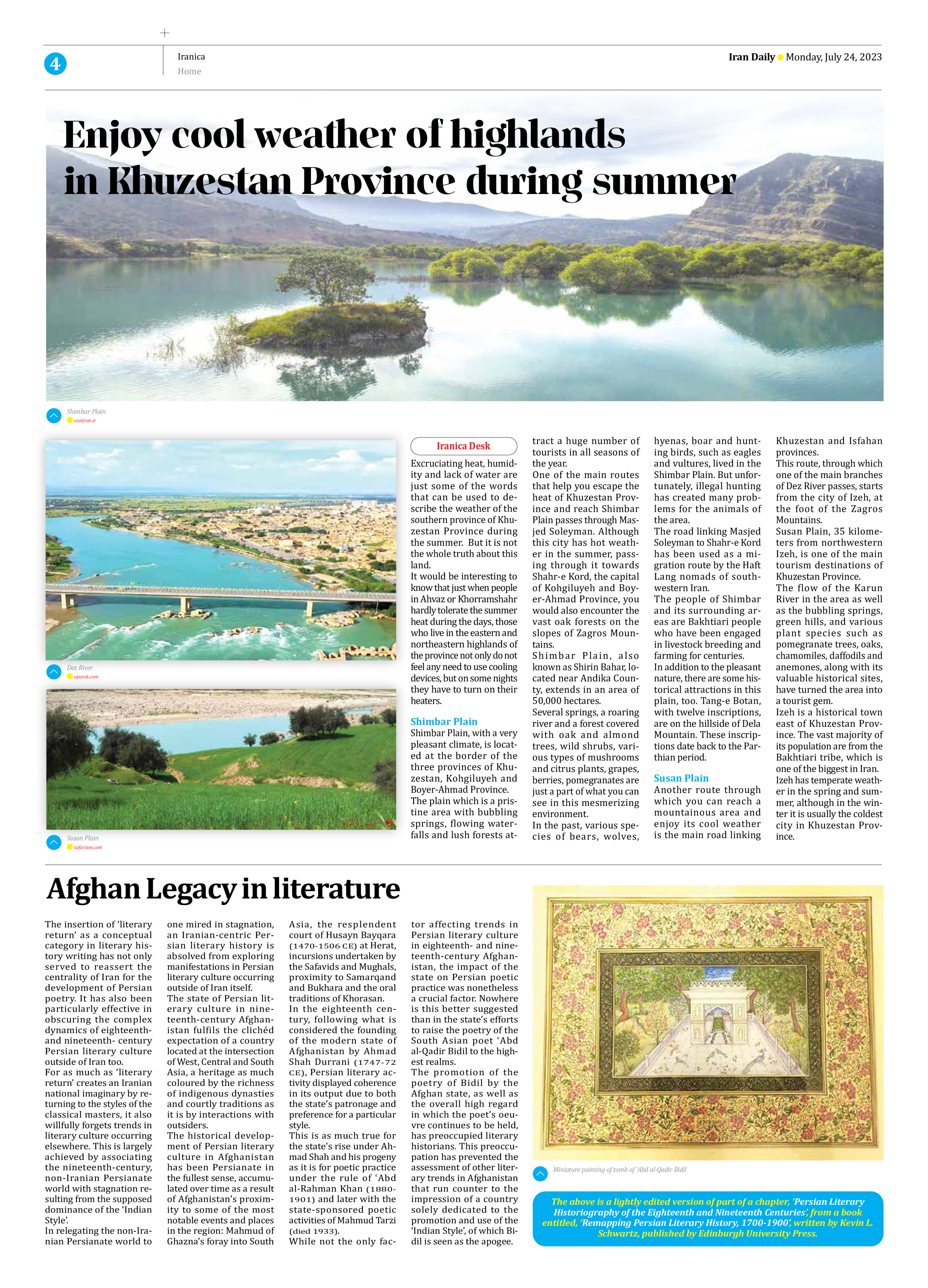
Afghan Legacy in literature
The insertion of ‘literary return’ as a conceptual category in literary history writing has not only served to reassert the centrality of Iran for the development of Persian poetry. It has also been particularly effective in obscuring the complex dynamics of eighteenth- and nineteenth- century Persian literary culture outside of Iran too.
For as much as ‘literary return’ creates an Iranian national imaginary by returning to the styles of the classical masters, it also willfully forgets trends in literary culture occurring elsewhere. This is largely achieved by associating the nineteenth-century, non-Iranian Persianate world with stagnation resulting from the supposed dominance of the ‘Indian Style’.
In relegating the non-Iranian Persianate world to one mired in stagnation, an Iranian-centric Persian literary history is absolved from exploring manifestations in Persian literary culture occurring outside of Iran itself.
The state of Persian literary culture in nineteenth-century Afghanistan fulfils the clichéd expectation of a country located at the intersection of West, Central and South Asia, a heritage as much coloured by the richness of indigenous dynasties and courtly traditions as it is by interactions with outsiders.
The historical development of Persian literary culture in Afghanistan has been Persianate in the fullest sense, accumulated over time as a result of Afghanistan’s proximity to some of the most notable events and places in the region: Mahmud of Ghazna’s foray into South Asia, the resplendent court of Husayn Bayqara (1470-1506 CE) at Herat, incursions undertaken by the Safavids and Mughals, proximity to Samarqand and Bukhara and the oral traditions of Khorasan.
In the eighteenth century, following what is considered the founding of the modern state of Afghanistan by Ahmad Shah Durrani (1747-72 CE), Persian literary activity displayed coherence in its output due to both the state’s patronage and preference for a particular style.
This is as much true for the state’s rise under Ahmad Shah and his progeny as it is for poetic practice under the rule of ʿAbd al-Rahman Khan (1880-1901) and later with the state-sponsored poetic activities of Mahmud Tarzi (died 1933).
While not the only factor affecting trends in Persian literary culture in eighteenth- and nineteenth-century Afghanistan, the impact of the state on Persian poetic practice was nonetheless a crucial factor. Nowhere is this better suggested than in the state’s efforts to raise the poetry of the South Asian poet ʿAbd al-Qadir Bidil to the highest realms.
The promotion of the poetry of Bidil by the Afghan state, as well as the overall high regard in which the poet’s oeuvre continues to be held, has preoccupied literary historians. This preoccupation has prevented the assessment of other literary trends in Afghanistan that run counter to the impression of a country solely dedicated to the promotion and use of the ‘Indian Style’, of which Bidil is seen as the apogee.
The above is a lightly edited version of part of a chapter, ‘Persian Literary Historiography of the Eighteenth and Nineteenth Centuries’, from a book entitled, ‘Remapping Persian Literary History, 1700-1900’, written by Kevin L. Schwartz, published by Edinburgh University Press.







